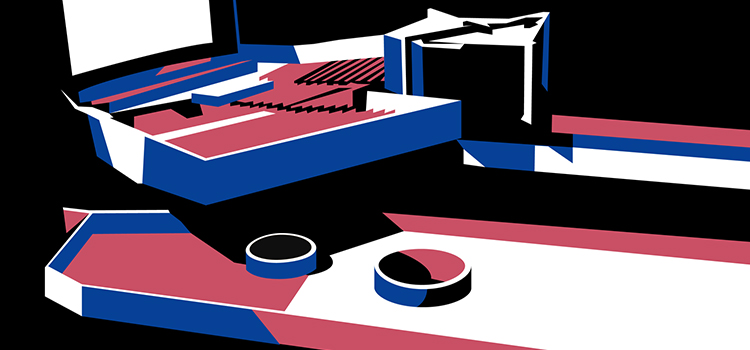
Modernism in the Air
The current EAM Library exhibition, Aerial Photographs in Print, 1860 to Today, investigates the use of traditional publishing in building a language around aerial imagery.
A component of the exhibition focuses on the growth of aerial photography as a tool for land use by architects, developers, governments, and the agriculture business in the twentieth century. A persuasive element emerges from a closer examination of some of these uses, particularly in the context of subtle debates about modernist approaches to architecture and planning.
We'll focus on examples from Fairchild Aerial Surveys, which had the aerial photography business cornered (literally, if you think about it) in the United States. Then, in light of interesting new ways to aerial imagery in our time, we'll explore this legacy.
Sherman Fairchild's early company, Fairchild Aerial Surveys (1924–65), was a success. During World War I, he designed an aerial camera that was more stable than its predecessors. For decades, cameras based on this technology were the military and industrial standard, and the business also manufactured cameras for NASA's early space programme.
Rebecca Ross argues in her dissertation that aerial photography's development was critical to the professionalisation of 20th-century city planning, looking at how companies like Fairchild enabled "a productive link between the working methods of planning professionals and the broader visual culture in which they are situated." Indeed, as historian Thomas Campanella points out, "Aerial imagery was... a big deal" in the early 1920s, when the corporation was founded.
As much as technological innovation, the company's success was built on aggressive marketing. Fairchild turned photos like the first aerial survey of Manhattan (1921) into "a focus of his commercial campaigns, combining fact and hyperbole to describe the benefits of using aerial photography in practically all elements of urban planning and management," according to professor Jason Weems.
This method is exemplified by the combined sales and technical guidebook For Photography from the Air (1934). With a bright cover and dramatic photographs, as well as copious technical detail, it's easy to understand how the corporation combined vigorous technological development with coordinated surveys to grow an aerial imagery industry.
"Aerial photographs reveal the scale of existing and new development in a way that zoning maps, zoning codes, satellite surveys, and traditional site plans cannot," historian Dolores Hayden writes.
Aerial images are viewed as anonymous information sources striving for neutrality and utility in these circumstances, rather as created photography. A typical survey image, for example, can be found at the top, courtesy of the New York State Archive. Fairchild Plant, N.Y. (1949) is a relatively unimpressive photograph from a huge survey of New York State. Despite the fact that the photographers were photographing their own workplace in Woodside, Queens, the image is similar to the others: utilitarian and detached.

Leave a Reply